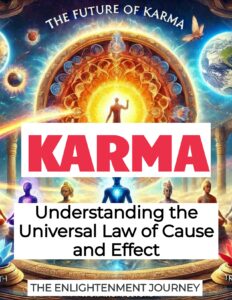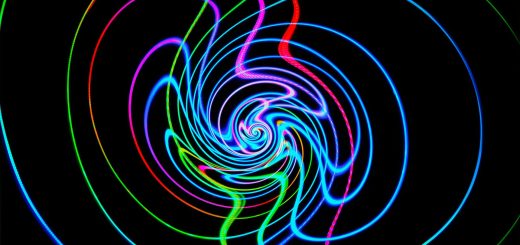Witches vs. Warlocks: A Clash of Magical Powers

Before diving in, please note: This post is for informational purposes only. If you’d like to know more about how we approach topics, feel free to check out our friendly Disclaimer Page.
Hey there, amazing readers! 🖐️ Just a quick note: yes, we know there are a lot of ads here. Trust us, we get it—it’s not the prettiest look, but they help us keep this blog alive and kicking. Those pesky little ads cover the costs of all the behind-the-scenes magic, from hosting and tech stuff to creating content we hope you’ll love.
We’re committed to delivering quality posts, and your support (even just sticking around despite the ads) means everything to us. So, bear with us, and thanks for helping us keep the good vibes rolling. Now, on to the fun stuff! 😉
TRANSLATE BUTTON AT THE END OF THE ARTICLE
Introduction
In the realm of magic and folklore, witches and warlocks stand as iconic figures, each wielding distinct magical powers and embodying different traditions and myths.
While both are often associated with the supernatural, their roles, abilities, and perceptions vary greatly.
This article delves into the contrasting and sometimes overlapping worlds of witches and warlocks, exploring their historical backgrounds, magical practices, and the cultural implications of their powers.
Historical Origins of Witches and Warlocks
Understanding the historical context of witches and warlocks provides insight into their roles and representations.
Witches
Ancient Roots: The concept of witches dates back to ancient civilizations.
In Greek and Roman mythology, figures like Hecate and Circe were powerful female beings with magical abilities.
Medieval and Renaissance Periods: During the Middle Ages and Renaissance, witches were often depicted as women practicing harmful magic.
The witch hunts of this period led to widespread persecution and trials.
Modern Interpretations: In contemporary times, the perception of witches has evolved, with many viewing them as practitioners of nature-based spirituality and magic.
Warlocks
Etymology and Evolution: The term “warlock” originates from the Old English word “wærloga,” meaning “traitor” or “deceiver.” Historically, warlocks were often seen as male practitioners of dark or forbidden magic.
Cultural Depictions: In various cultures, warlocks are portrayed as powerful male magic users.
Unlike witches, their representation often leans towards malevolent or antagonistic roles.
Modern Reinterpretations: Today, the term “warlock” is less commonly used, with many preferring to use “wizard” or “sorcerer” to describe male magic practitioners.
Magical Practices and Abilities
Witches and warlocks, while both engaged in magical practices, often have different methods and specialties.
Witches
Nature Magic: Many witches practice nature-based magic, drawing on the energies of the earth, moon, and elements.
This includes rituals, herbalism, and divination.
Rituals and Spells: Witches often perform rituals and cast spells to achieve various outcomes, such as healing, protection, or personal growth.
Their practices are usually centered around the cycles of the moon and the changing seasons.
Divination: Techniques such as tarot reading, scrying, and runes are common among witches for gaining insights and guidance.
Warlocks
Arcane Magic: Warlocks are often associated with arcane or ceremonial magic, which involves complex rituals, spells, and invocations.
Their practices may include summoning entities or channeling cosmic forces.
Forbidden Knowledge: In many traditions, warlocks are depicted as seekers of forbidden or occult knowledge, exploring the darker aspects of magic and the supernatural.
Powerful Artifacts: Warlocks may utilize magical artifacts, such as wands or enchanted objects, to amplify their powers and perform their rituals.
Cultural Representations and Stereotypes
The portrayal of witches and warlocks in literature, film, and folklore shapes public perception and cultural understanding.
Witches
Literary and Film Portrayals: Witches are often depicted as complex characters in literature and film, ranging from malevolent figures in horror stories to benevolent, wise individuals in fantasy genres.
Examples include Shakespeare’s “Macbeth” and the “Harry Potter” series.
Stereotypes and Misconceptions: The stereotype of the witch as a cackling hag or a villainous figure persists in popular culture, though many modern representations focus on positive and empowering aspects.
Empowerment and Spirituality: Contemporary witchcraft, particularly in traditions like Wicca, emphasizes personal empowerment, connection to nature, and spiritual growth.
Warlocks
Fictional Depictions: Warlocks are often portrayed in fantasy and horror genres as powerful, enigmatic figures.
They may be depicted as antagonists, wise mentors, or seekers of dark knowledge, as seen in works like “The Chronicles of Narnia” or “Buffy the Vampire Slayer.”
Cultural Stereotypes: Warlocks are sometimes seen as sinister or malevolent, reflecting the historical association with dark or forbidden magic.
Understand the Powerful Law of Karma and Its Impact – Explore Here!

Modern Adaptations: Recent portrayals of warlocks focus on their complexities, showing them as multifaceted characters with a range of motives and personalities.
Gender Dynamics in Magical Traditions
The gender dynamics of witches and warlocks reflect broader cultural attitudes towards magic and power.
Witches
Female-Centric Traditions: Historically, witches have often been women, and many magical traditions are centered around female practitioners.
This reflects broader themes of female empowerment and connection to the natural world.
Persecution and Empowerment: The persecution of witches during historical witch hunts was often rooted in gender bias.
Today, modern witchcraft can be a form of empowerment and resistance against traditional gender norms.
Warlocks
Male Magic Practitioners: Warlocks, as male counterparts to witches, often embody different aspects of magical power.
The role of warlocks may highlight themes of authority, control, and intellectual pursuit in magic.
Modern Reinterpretations: The gendered perception of warlocks has evolved, with many modern practitioners rejecting traditional labels in favor of more inclusive terms.
The Intersection of Witches and Warlocks
While witches and warlocks are distinct in many traditions, there are also areas of overlap and intersection.
Shared Practices
Rituals and Ceremonies: Both witches and warlocks may engage in rituals and ceremonies, though the specifics can vary.
These practices are often aimed at achieving personal or mystical goals.
Magical Knowledge: Both witches and warlocks may seek knowledge about magic, the supernatural, and the mystical world.
This pursuit often involves studying ancient texts, learning from mentors, and experimenting with magical techniques.
Conflicts and Alliances
Conflict in Folklore: In some traditions, witches and warlocks are depicted as rivals or adversaries, reflecting broader themes of conflict between different magical traditions.
Collaborative Relationships: In other contexts, witches and warlocks may work together, combining their skills and knowledge to achieve common goals or to balance their magical practices.
Modern Perspectives on Witchcraft and Warlock Practices
In contemporary times, the practices and perceptions of witches and warlocks have evolved significantly.
Wicca and Contemporary Witchcraft
Wicca: Founded in the mid-20th century, Wicca is a modern witchcraft tradition that emphasizes nature worship, the duality of the divine, and ethical practices.
It has contributed to a positive re-evaluation of witchcraft.
Eclectic Practices: Many modern witches practice eclectic forms of witchcraft, blending elements from various traditions and personal beliefs.
Magic and Popular Culture
Entertainment and Media: Witches and warlocks are prominent in popular culture, from television shows and movies to books and video games.
These representations often reflect contemporary attitudes and interests in magic.
Cultural Impact: The portrayal of witches and warlocks in media influences public perception and can either reinforce or challenge traditional stereotypes.
Ethical Considerations in Magical Practices
The ethical dimensions of practicing magic are important for both witches and warlocks.
Responsibility and Integrity
Ethical Guidelines: Many magical traditions emphasize ethical guidelines, such as the Wiccan Rede, which advocates for harm none and the responsible use of magical power.
Personal Integrity: Practitioners of magic are encouraged to act with integrity and respect for others, avoiding manipulation or exploitation.
Impact on Others
Consent and Respect: Ensuring that magical practices respect the consent and boundaries of others is crucial.
Ethical magic involves consideration of how one’s actions affect others.
Transparency: Practitioners should be transparent about their intentions and the nature of their magical work, fostering trust and understanding.
Conclusion
The exploration of witches and warlocks reveals a rich tapestry of magical traditions, beliefs, and cultural representations.
While witches and warlocks have distinct roles and practices, their histories and modern interpretations offer insights into humanity’s fascination with the supernatural.
Understanding the differences and intersections between these magical figures enriches our appreciation of their place in folklore, literature, and contemporary culture.
Whether viewed as powerful agents of change or enigmatic symbols of mystery, witches and warlocks continue to captivate and inspire, reflecting our enduring curiosity about the magical and the unknown.

The Enlightenment Journey is a remarkable collection of writings authored by a distinguished group of experts in the fields of spirituality, new age, and esoteric knowledge.
This anthology features a diverse assembly of well-experienced authors who bring their profound insights and credible perspectives to the forefront.
Each contributor possesses a wealth of knowledge and wisdom, making them authorities in their respective domains.
Together, they offer readers a transformative journey into the realms of spiritual growth, self-discovery, and esoteric enlightenment.
The Enlightenment Journey is a testament to the collective expertise of these luminaries, providing readers with a rich tapestry of ideas and information to illuminate their spiritual path.
Our Diverse Expertise 🌟
While our primary focus is on spirituality and esotericism, we are equally passionate about exploring a wide range of other topics and niches 🌍📚. Our experienced team is dedicated to delivering high-quality, informative content across various subjects ✨.
To ensure we provide the most accurate and valuable insights, we collaborate with trusted experts in their respective domains 🧑🏫👩🏫. This allows us to offer well-rounded perspectives and knowledge to our readers.
Our blog originally focused on spirituality and metaphysics, but we’ve since expanded to cover a wide range of niches. Don’t worry—we continue to publish a lot of articles on spirituality! Frequently visit our blog to explore our diverse content and stay tuned for more insightful reads.
Understand the Powerful Law of Karma and Its Impact – Explore Here!






